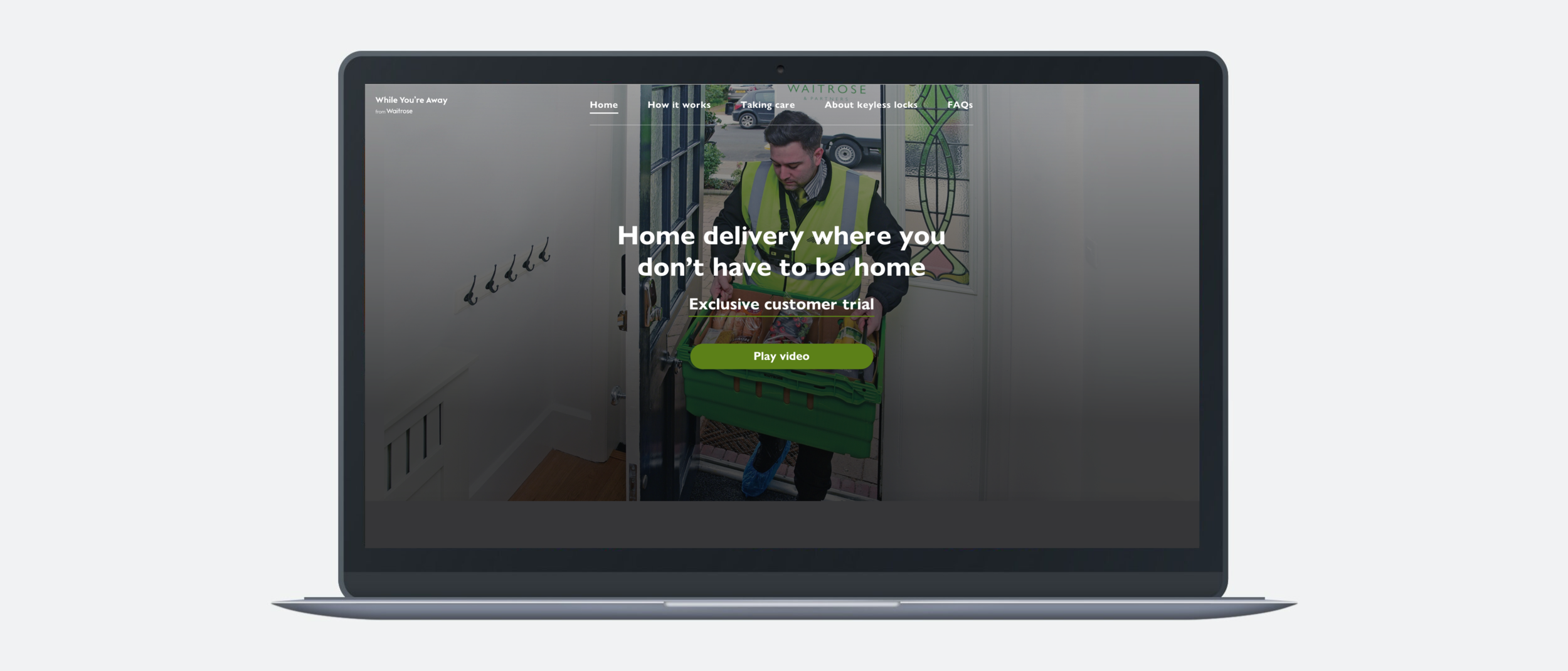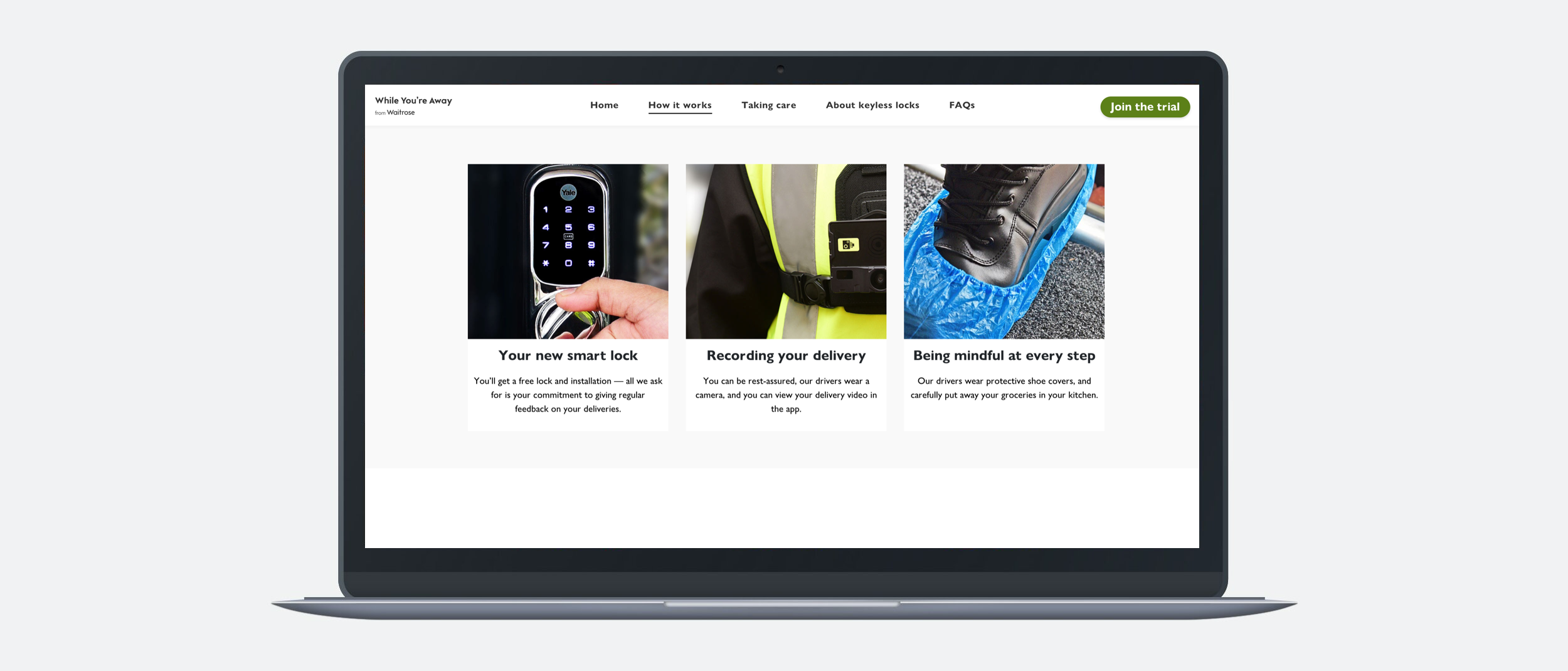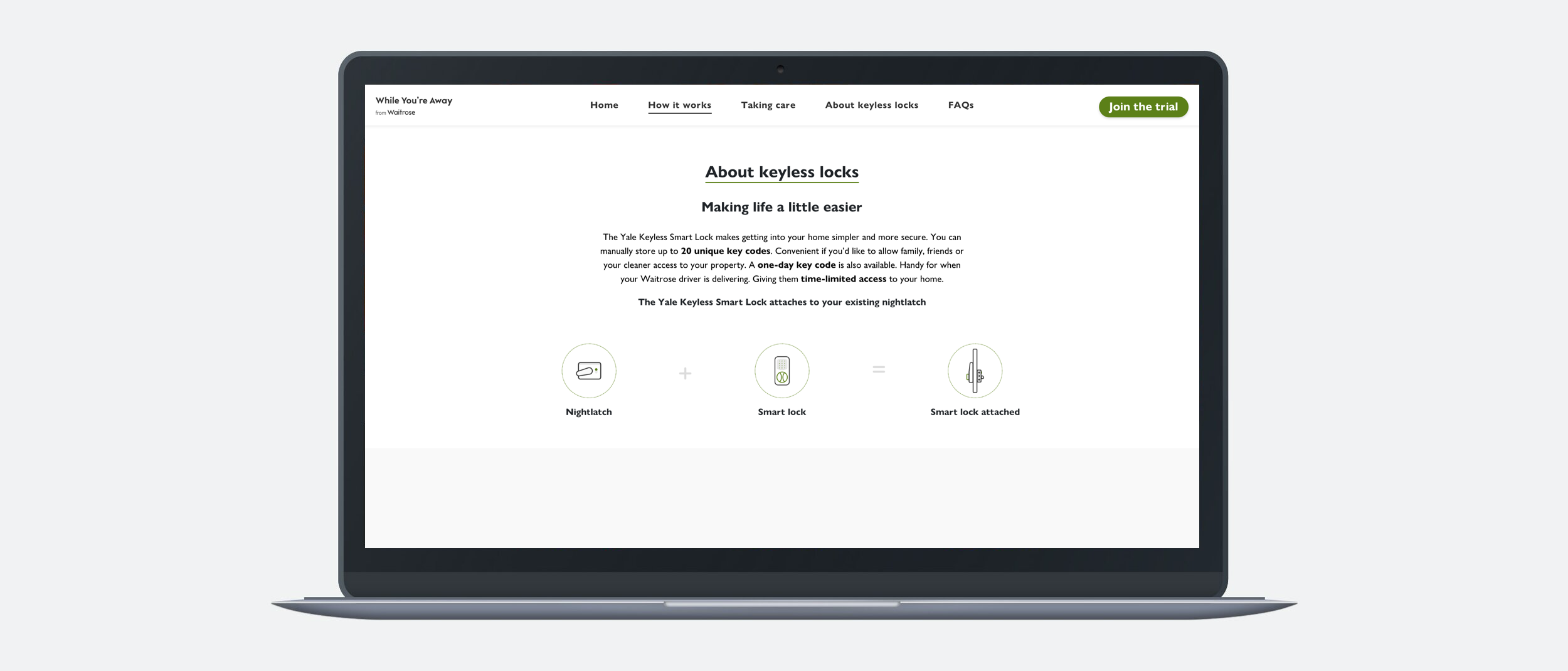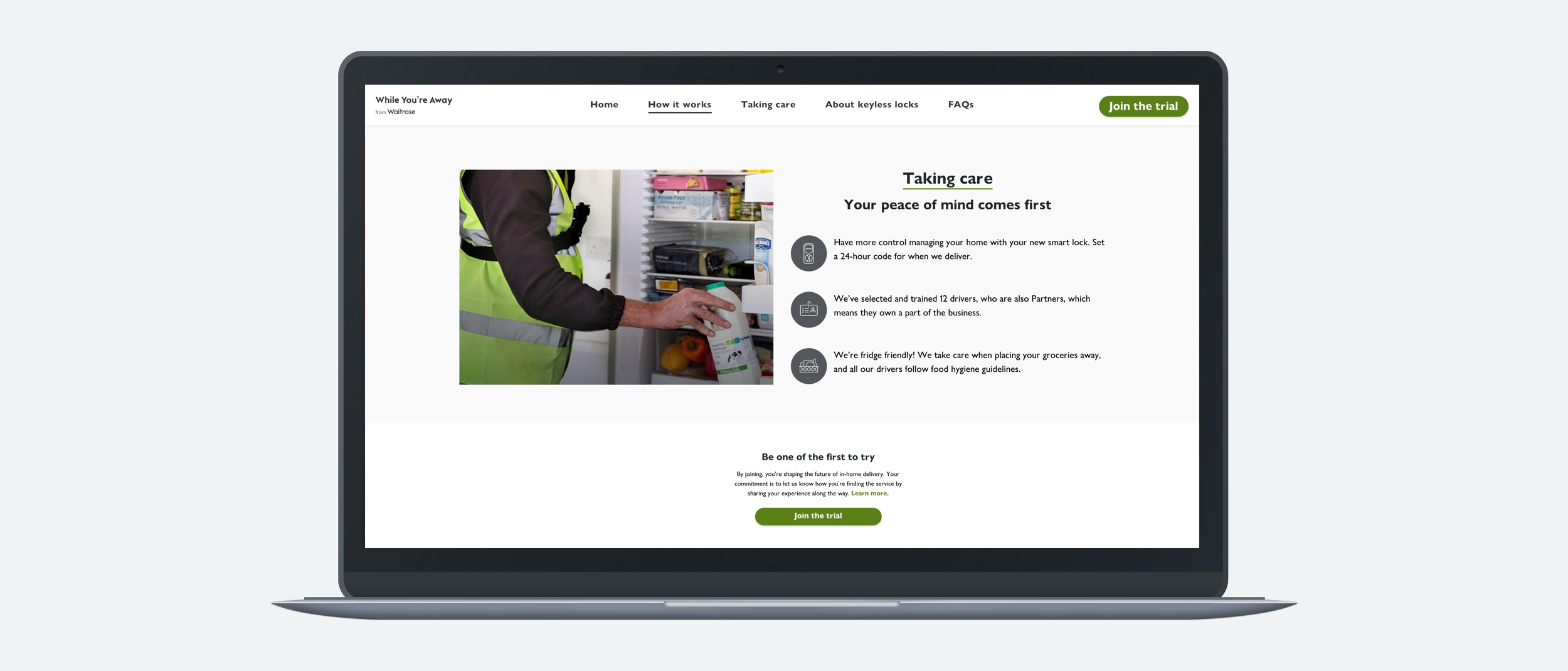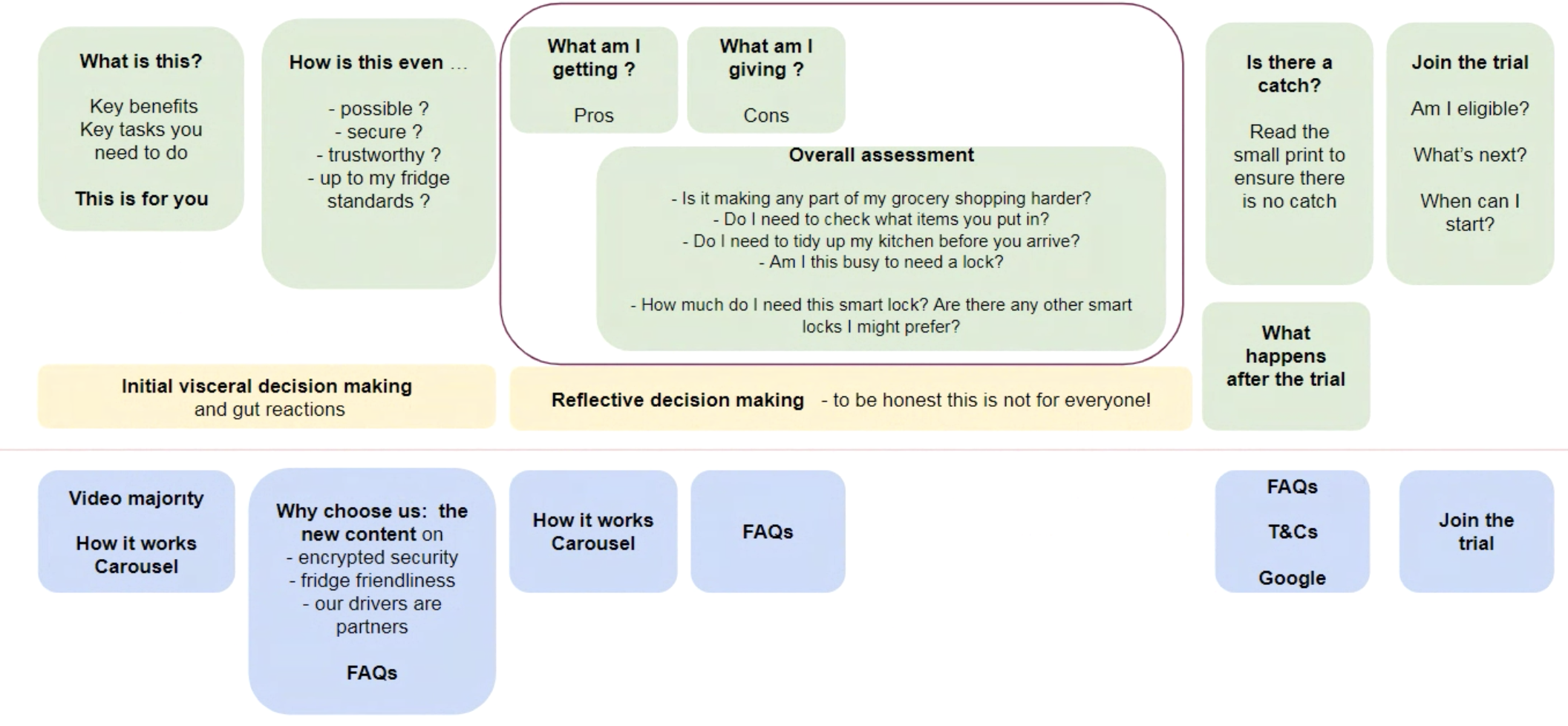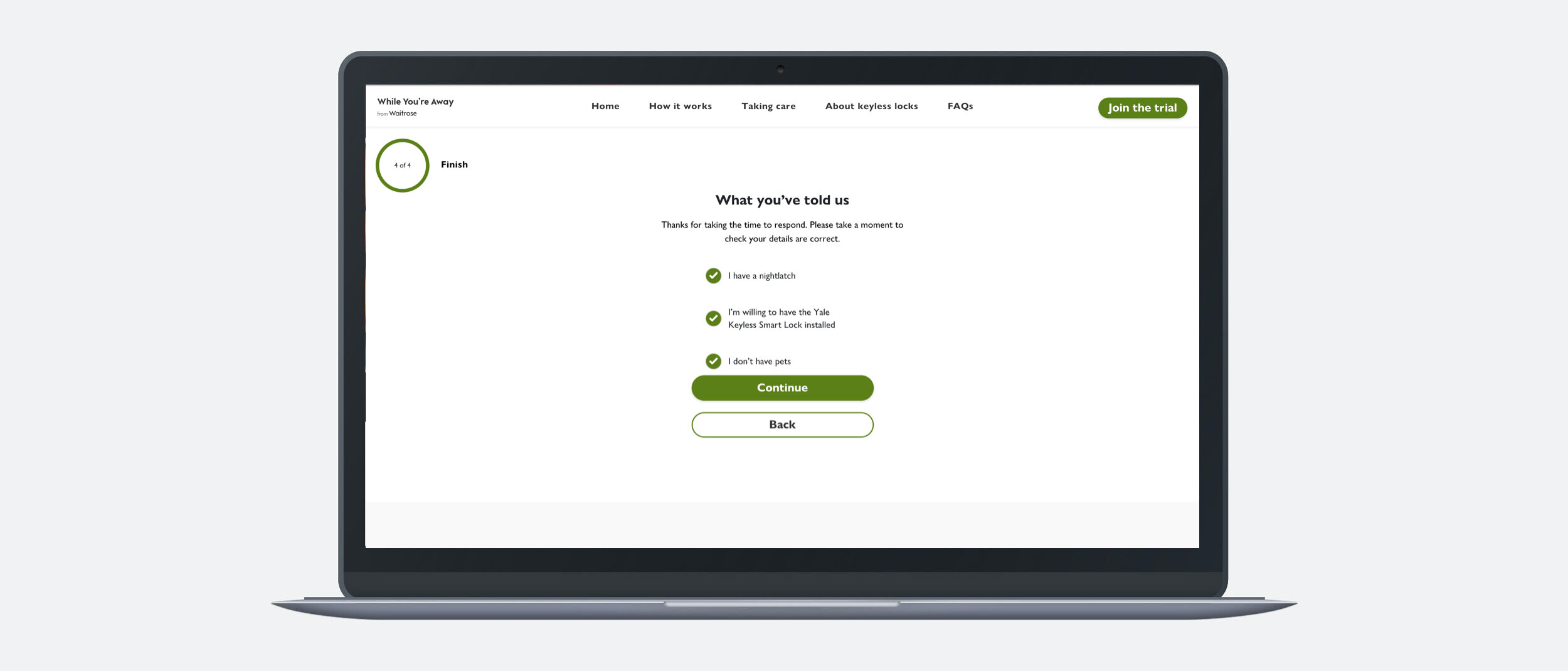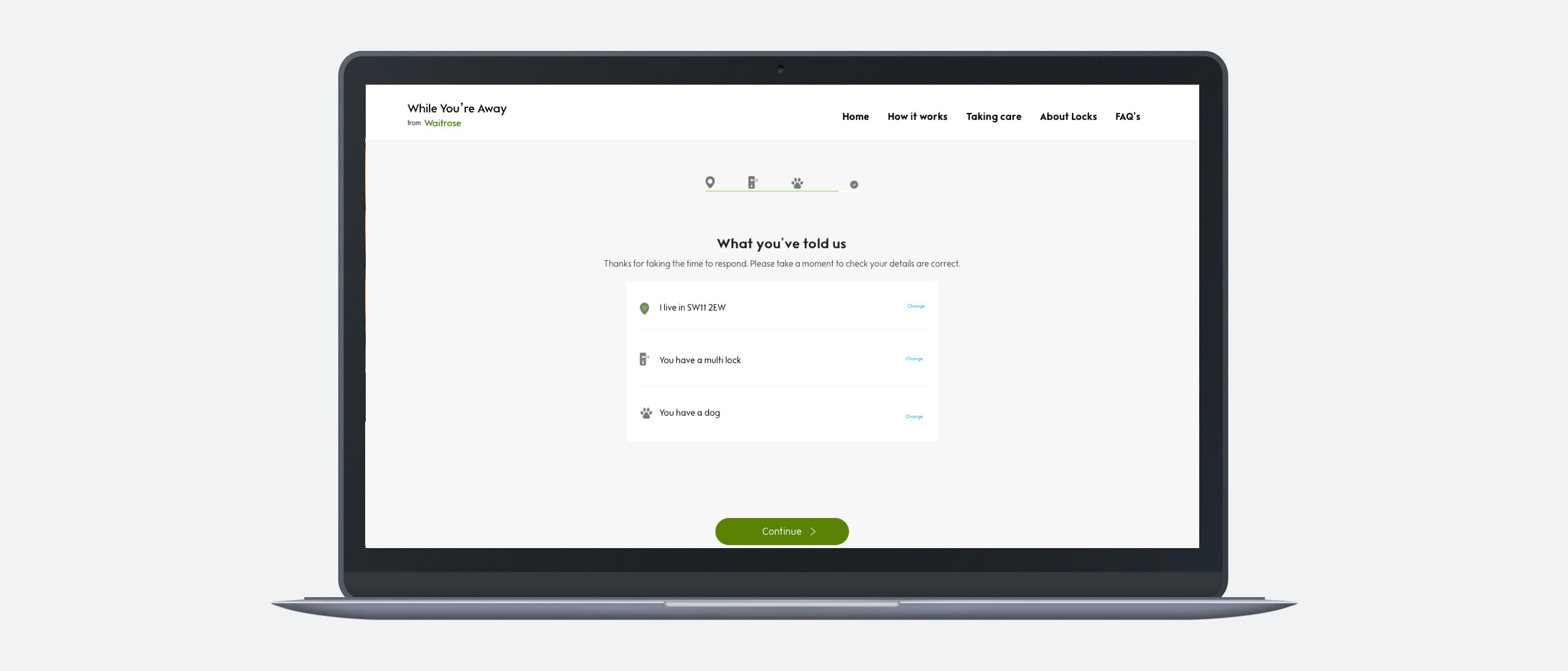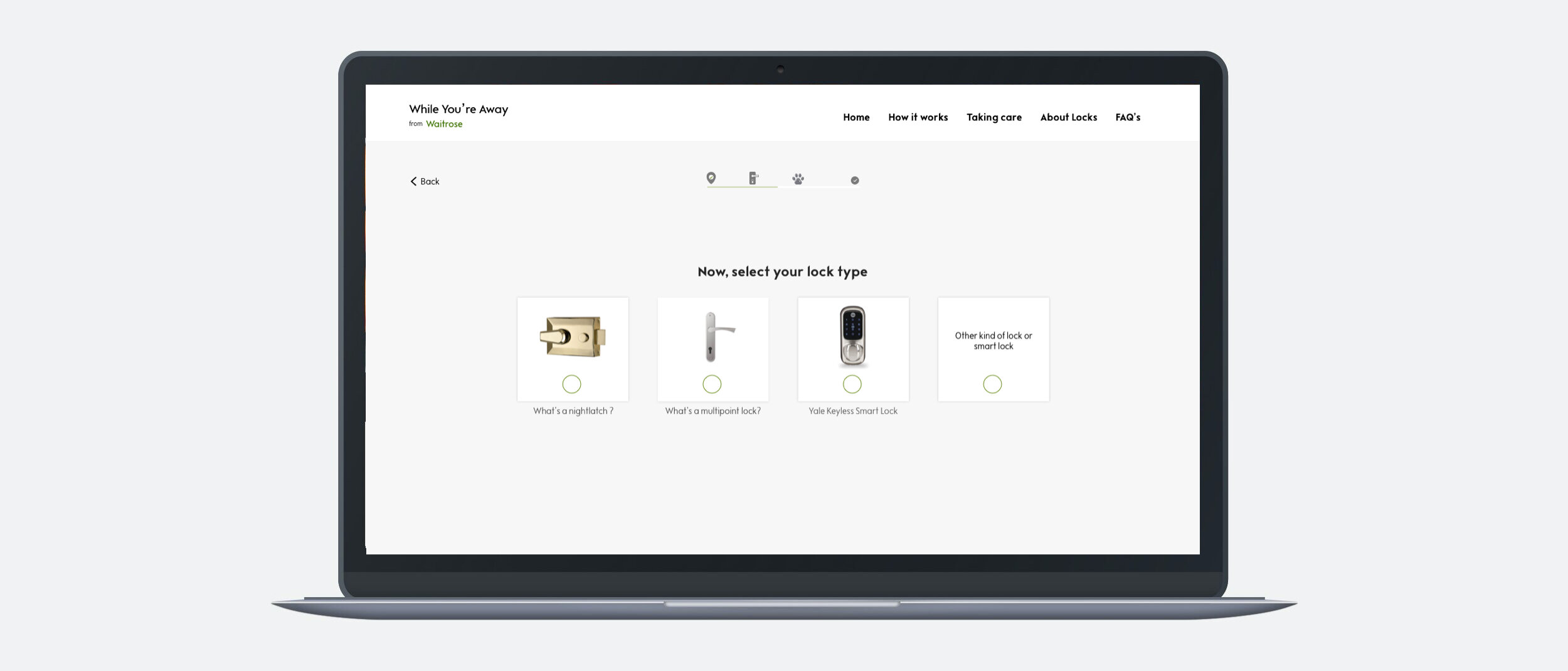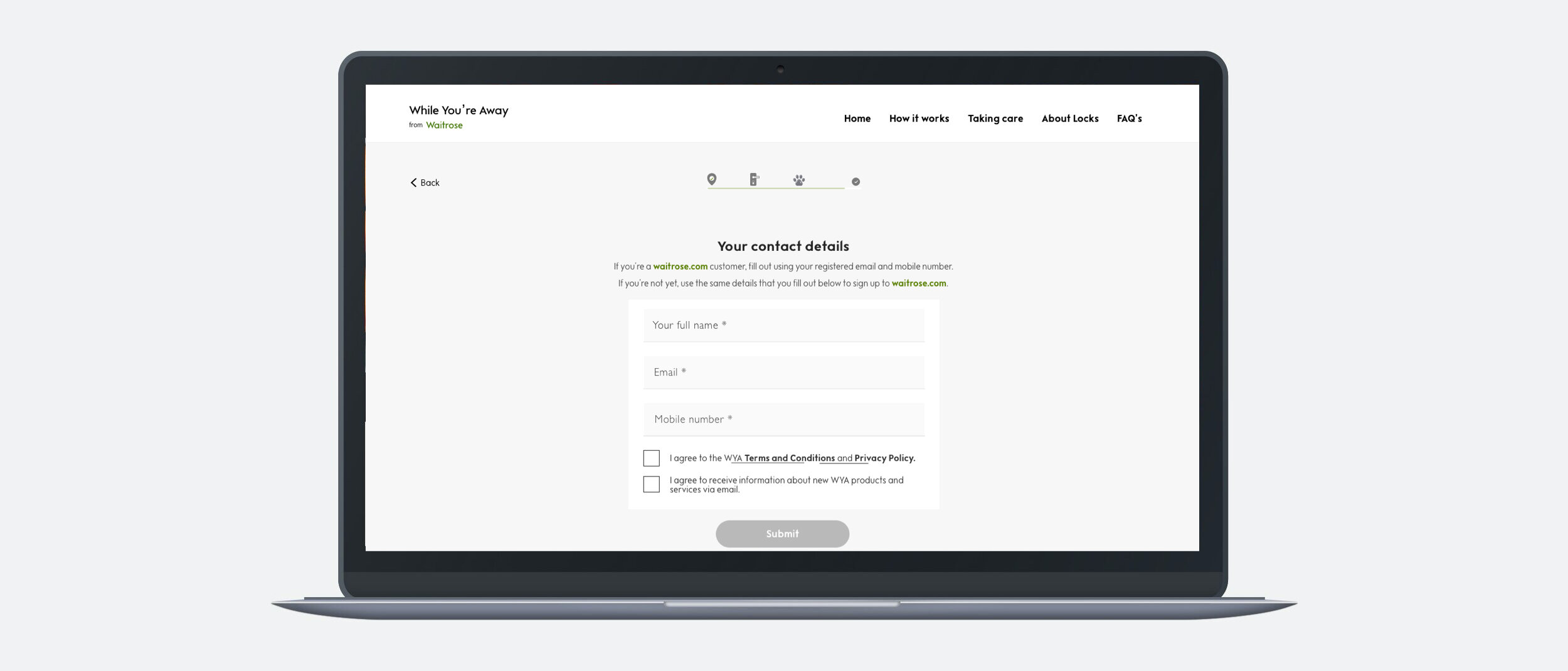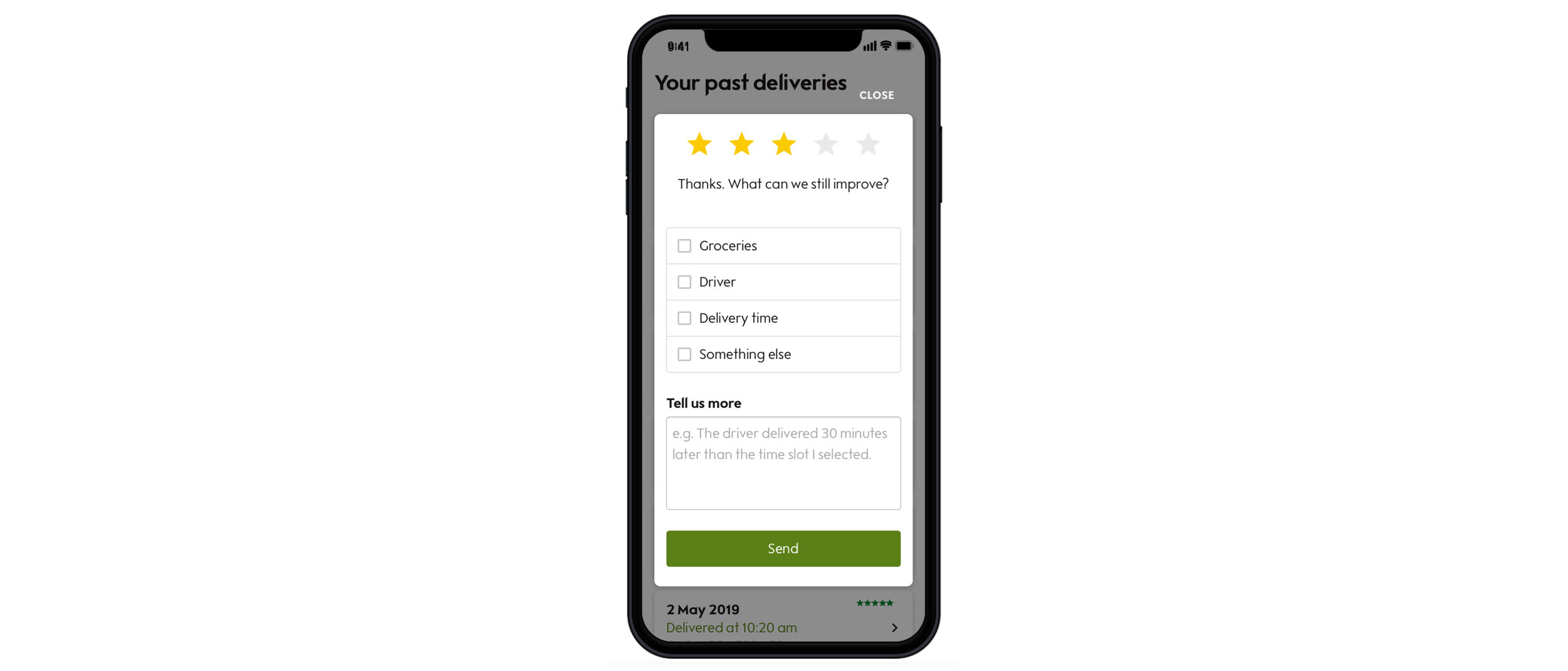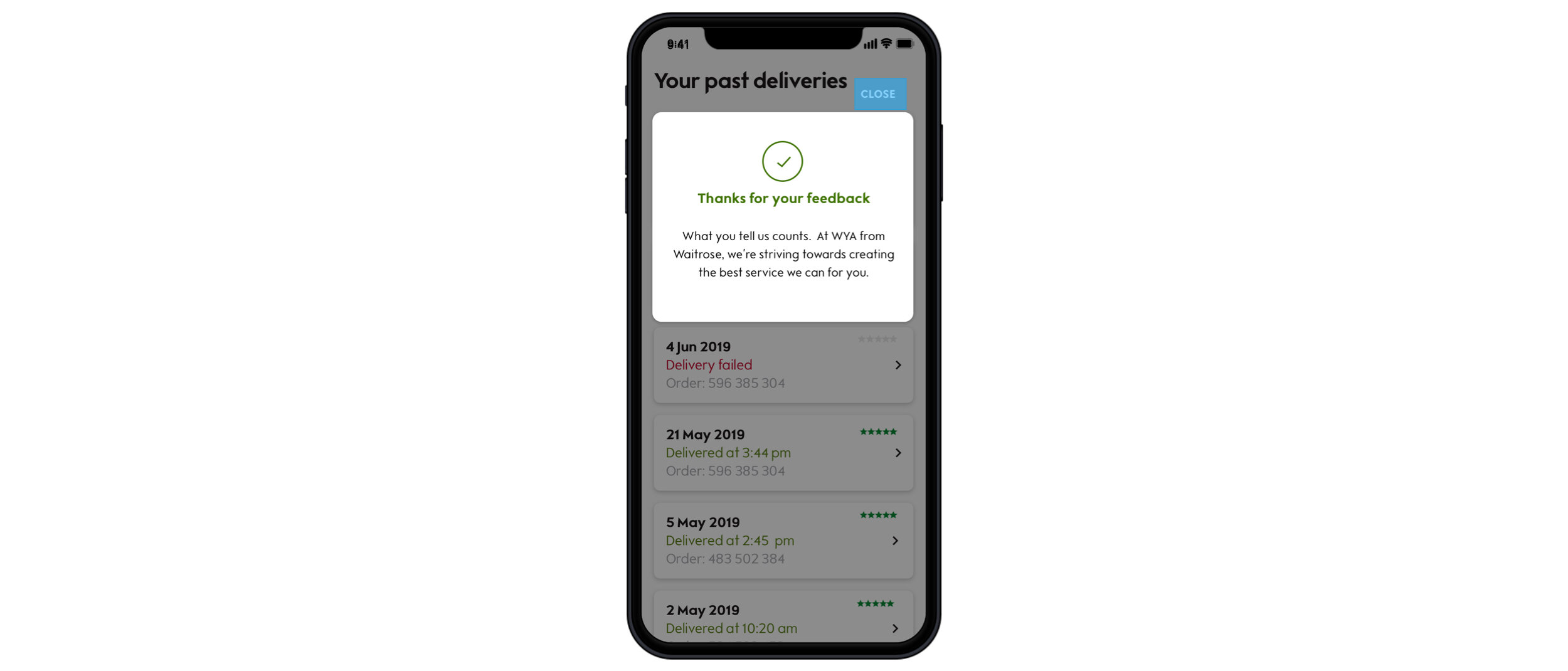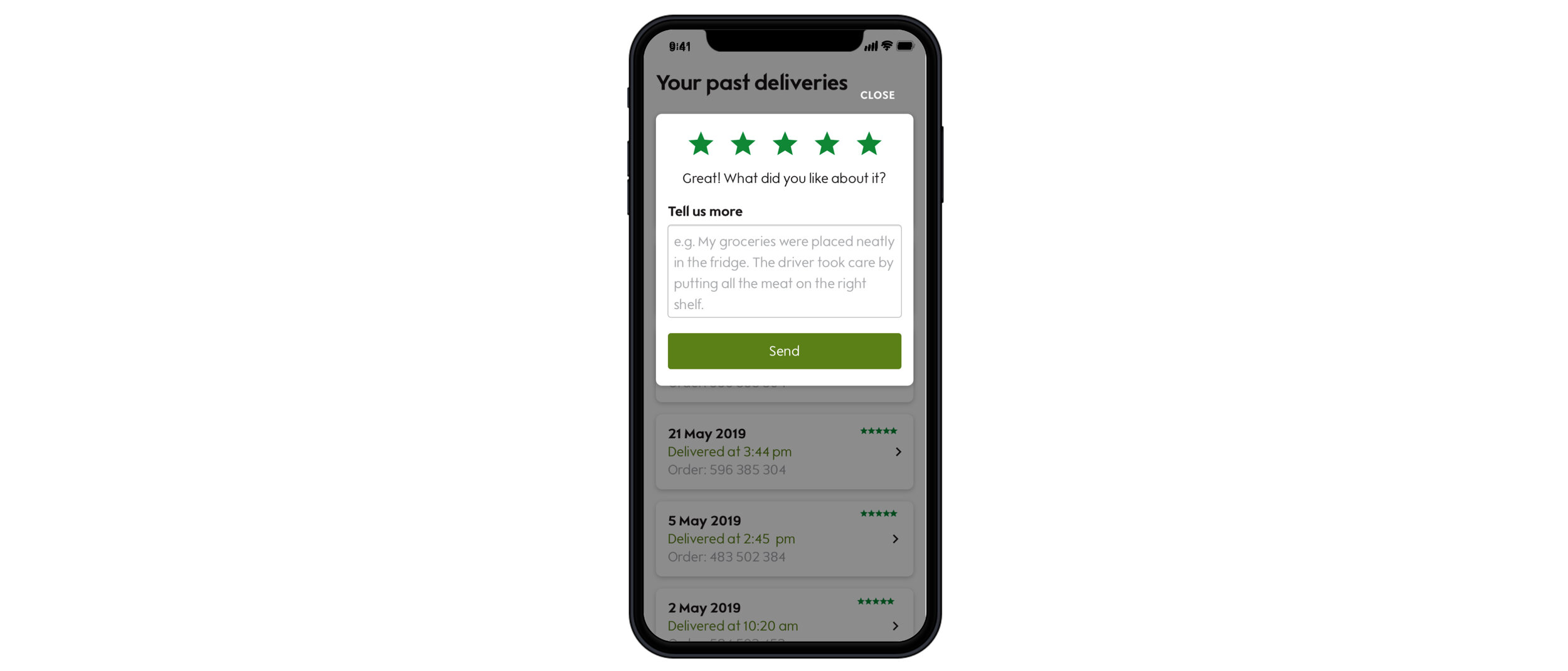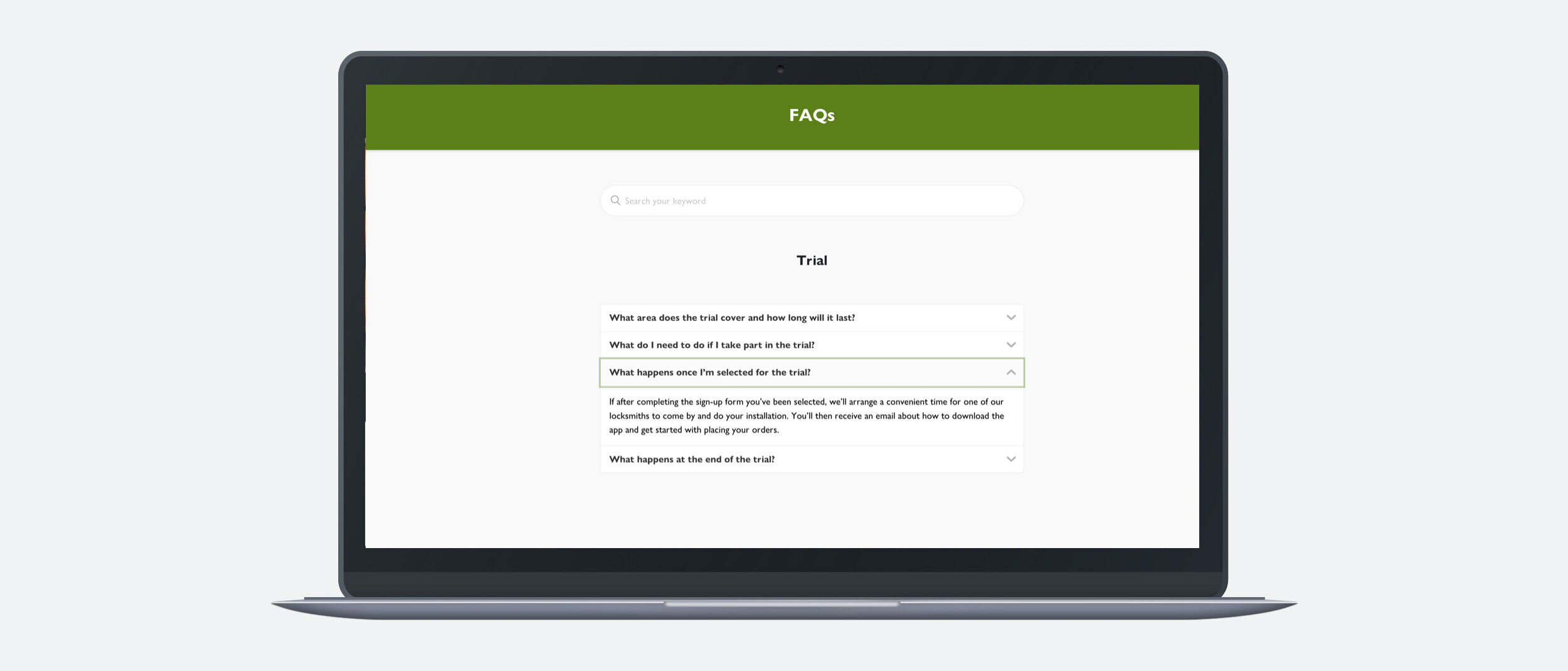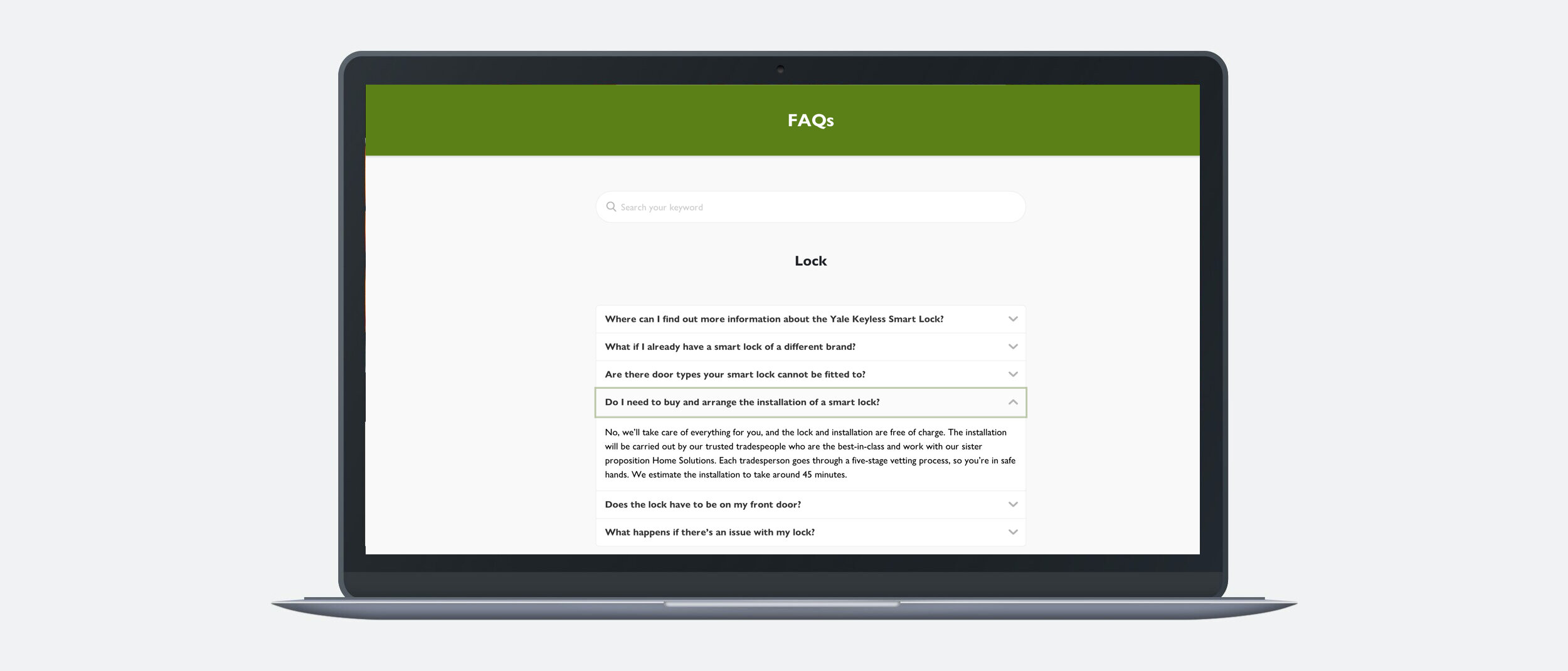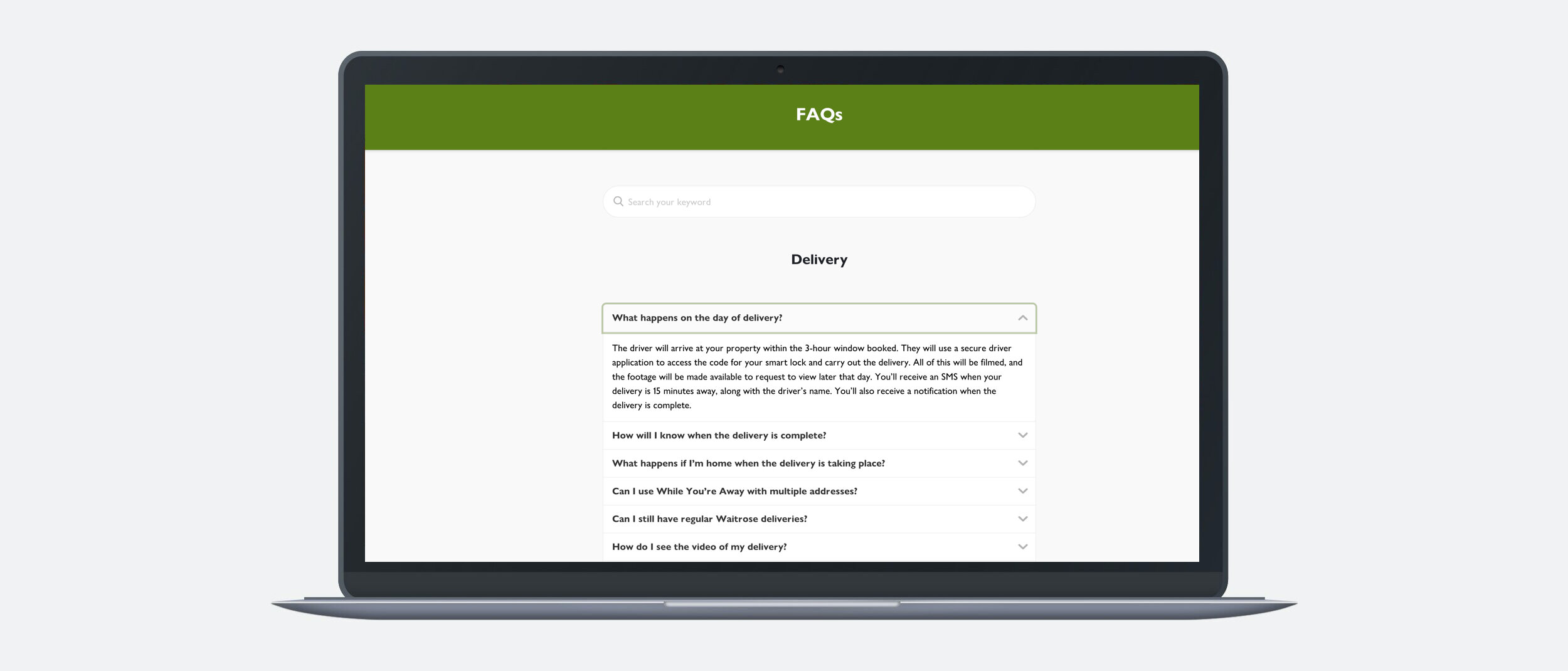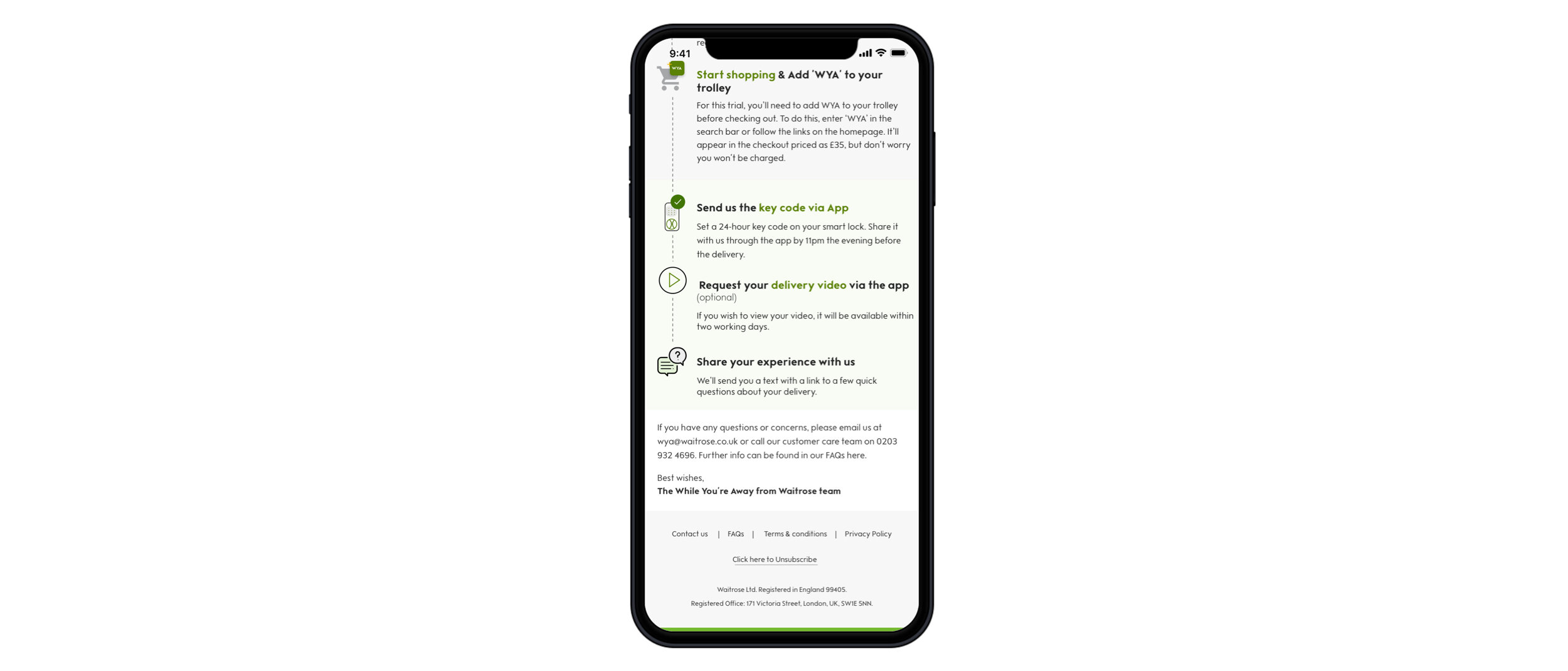The in-home experiment from Waitrose & Partners.
The project was set up as an experiment to test and learn about in-home delivery, specifically Waitrose groceries being delivered to the fridge or kitchen counter. I was part of the team running this experiment and bringing this product to market.
My role.
Being responsible for end-to-end digital touch points, I helped define the main messages, creating compelling experiences across the mobile and web. I also played a vital role in influencing the user experience and evolving the brand, voice, and content standard.
The core navigation.
After an analysis of the old homepage, it became clear that the information architecture of the whole page had to change as well as needing to get across with images and words what the service is in a quicker more efficient way. I created many iterations of ways of explaining the service and presented it to the core team, with all of us voting on our preferences. We also created a series of icons with headers and subheads explaining how the service works for ease and usability when scrolling and scanning on mobile.
Users are the best helpers to writers.
After the initial draft of the content design with the UX/UI designer, we did a user-testing workshop with five customers to see how they experienced it for themselves. Mainly centring around understandability — we did a five-second test, free exploration and then a quizzing session on what they had taken in. We learnt that almost all participants only read headers and the first sentence after the header, and any information after seemed to be skipped, so it was essential to be as concise and clear as possible. We also found that many customers had some visceral reactions when thinking about some key elements of the service, related to security, trust and the fridge. To address these objections and concerns, we mapped out these reactions and looked to create a piece of content that addressing them in the core navigation called ‘taking care.’
Customer research — mapping visceral reactions with content sections for core nav.
Hi-fi content to create peace of mind as per customer research session.
Microcopy that motivates action.
When writing for the onboarding journey and customer app I wanted to break down the boundary between written and spoken language, giving way to more conversational style of writing. In the sign-up journey the aim was to address the user directly using natural language, being short and to the point. In the case of CTAs and buttons it’s a case of removing the obstacles, the decision becomes the action.
FAQs and online help.
To put users at ease and answer any of their questions, working with the digital product owner and head of operations, I categorised and ordered themes of inquiries by topic or urgency to create a FAQs section. Using PPC search terms and creating keywords, I provided users with fast, quick information, which was made even more possible with the new accordion menu and search functionality.
FAQs comprising six sections of content: trial, research, lock, order, delivery and security.
Reaching out to customers.
Working with marketing, I created countless emails for both acquisition and retention that focussed on the benefits and value to the user, while having awareness and acknowledgement of their concerns; making them feel like they are in good hands. Not only did I have to do the usual job of clearly articulating something new to our users, but I also had to explain using accessible, conversational, instructional copy how they interact with the service, for example to download the app and get started. And this was not so easy due to the operational constraints and workarounds we faced.
Instructional copy for users to get going and start using the app and service. This piece of comms went through many design and copy iterations.
Some results.
The While You’re Away from Waitrose experiment has been successful in terms of learning about in-home delivery and customers behaviour. Post experiment, we experienced a 31% increase in customers shopping online instead of in-store and a larger average order basket size as well as average order value. The business is taking these learnings with the view to explore all possibilities relating to creating valuable in-home services.

